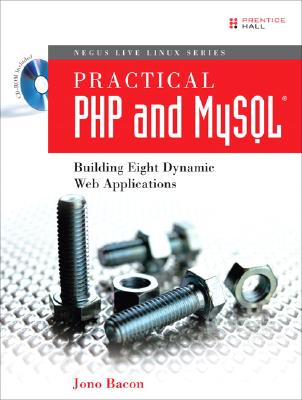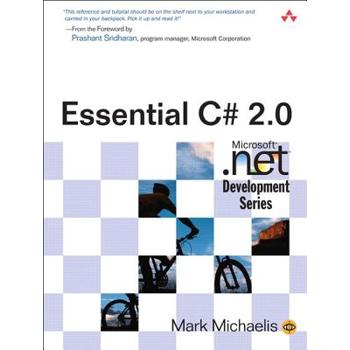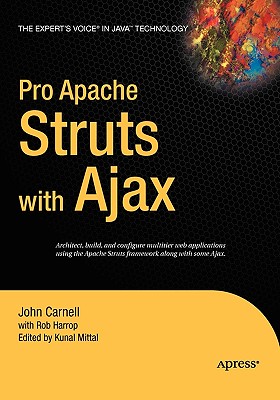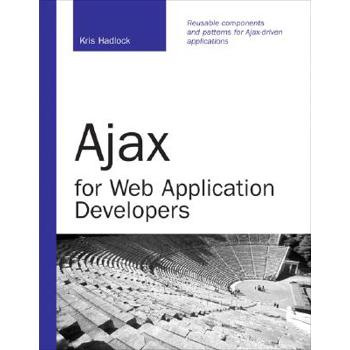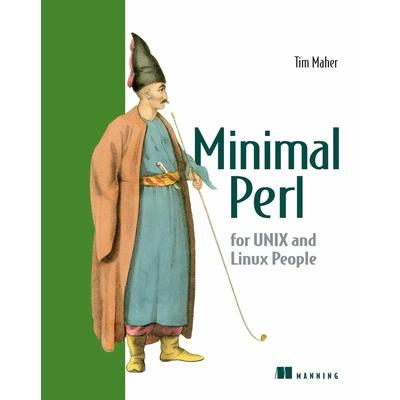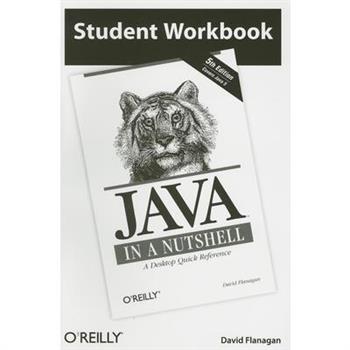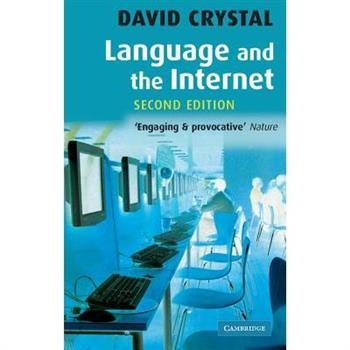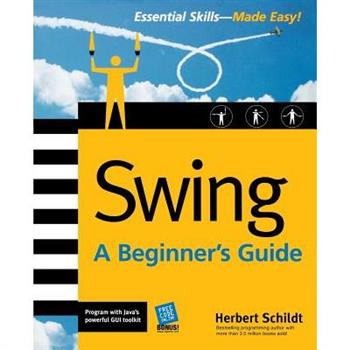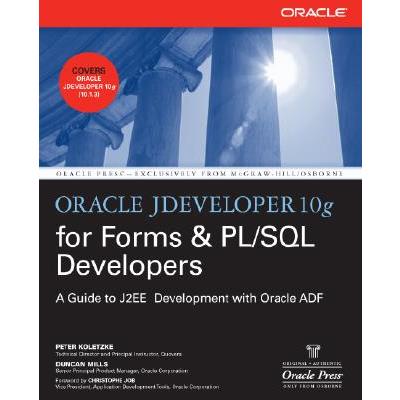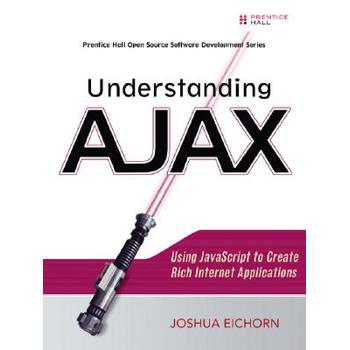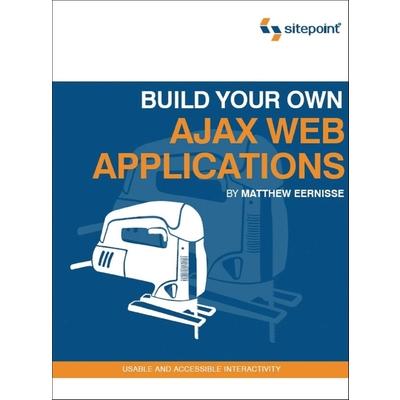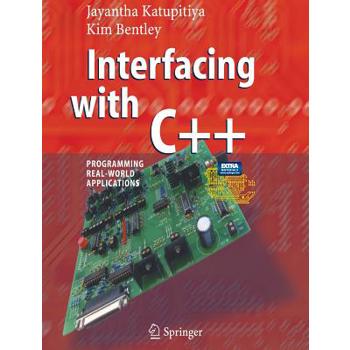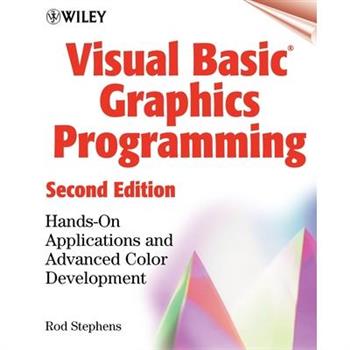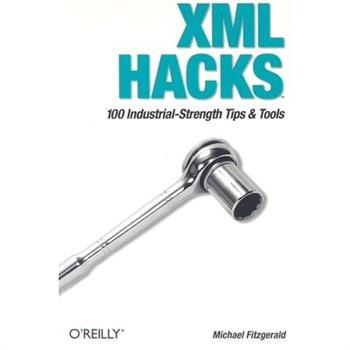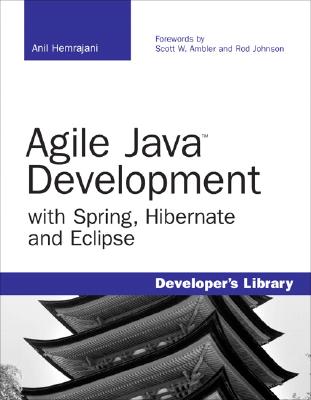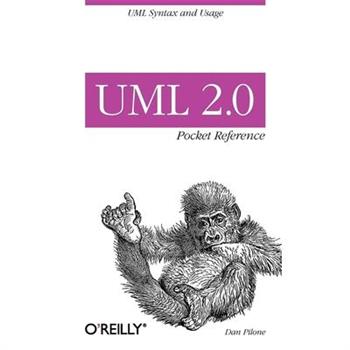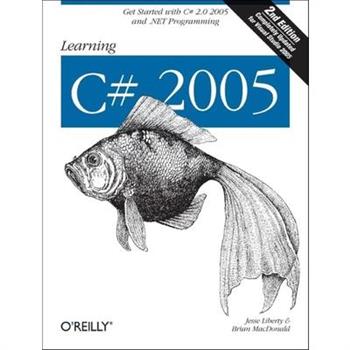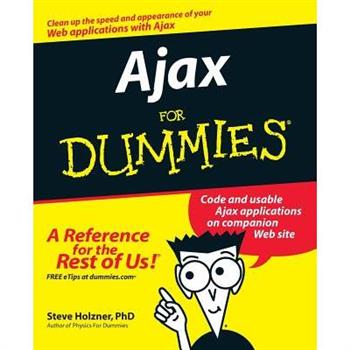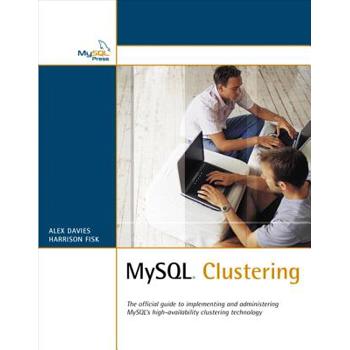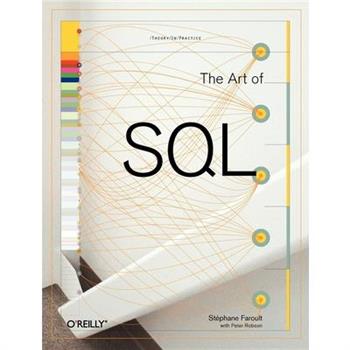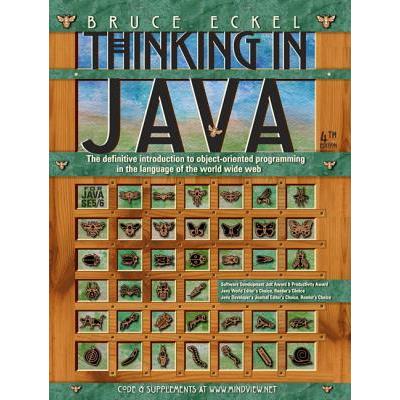Dynamic HTML
Packed with information on the latest web specifications and browser features, this new edition is your ultimate one-stop resource for HTML, XHTML, CSS, Document Object Model (DOM), and JavaScript development. Here is the comprehensive reference for designers of Rich Internet Applications who need to operate in all modern browsers, including Internet Explorer 7, Firefox 2, Safari, and Opera.With this book, you can instantly see browser support for the latest standards-based technologies, including CSS Level 3, DOM Level 3, Web Forms 2.0, XMLHttpRequest for AJAX applications, JavaScript 1.7, and many more. This new edition: Provides at-a-glance references for the tags, attributes, objects, properties, methods, and events of HTML, XHTML, CSS, DOM, and core JavaScript. You can quickly look up a particular feature or language term to see if it is available in desired browser brands and versions.Includes handy cross referencing that lets you look up an attribute (or object property, method, or event type) to find all the items that recognize it, including interrelated HTML tags, style properties, and document object model methods, properties, and events.Offers appendices where you can quickly locate values useful in HTML authoring and scripting. You'll find coverage of commands used across three browsers for user-editable content.Includes a glossary that gives you quick explanations of some of the new and potentially confusing terminology of DHTML.Dynamic HTML: The Definitive Reference speeds the way to adding sophisticated features to your web pages. Indispensable, complete, and succinct, this bestselling guide is the must-have compendium for all web developers involved in creating dynamic web content.
Java And Xml
Java and XML, 3rd Edition, shows you how to cut through all the hype about XML and put it to work. It teaches you how to use the APIs, tools, and tricks of XML to build real-world applications. The result is a new approach to managing information that touches everything from configuration files to web sites. After two chapters on XML basics, including XPath, XSL, DTDs, and XML Schema, the rest of the book focuses on using XML from your Java applications. This third edition of Java and XML covers all major Java XML processing libraries, including full coverage of the SAX, DOM, StAX, JDOM, and dom4j APIs as well as the latest version of the Java API for XML Processing (JAXP) and Java Architecture for XML Binding (JAXB). The chapters on web technology have been entirely rewritten to focus on the today's most relevant topics: syndicating content with RSS and creating Web 2.0 applications. You'll learn how to create, read, and modify RSS feeds for syndicated content and use XML to power the next generation of websites with Ajax and Adobe Flash. Topics include: The basics of XML, including DTDs, namespaces, XML Schema, XPath, and Transformations The SAX API, including all handlers, filters, and writers The DOM API, including DOM Level 2, Level 3, and the DOM HTML module The JDOM API, including the core and a look at XPath support The StAX API, including StAX factories, producing documents and XMLPull Data Binding with JAXB, using the new JAXB 2.0 annotations Web syndication and podcasting with RSS XML on the Presentation Layer, paying attention to Ajax and Flash applications If you are developing with Java and need to use XML, or think that you will be in the future; if you're involved in the new peer-to-peer movement, messaging, or web services; or if you're developing software for electronic commerce, Java and XML will be an indispensable companion.
Php Solutions
The killer combination of PHP, MySQL database, and the Apache web server is by far the most popular set of dynamic web technologies in use today. But not everyone who uses PHP is a programmer. Unlike code-heavy references, this book provides a more friendly, accessible and visual learning style. It takes the reader through the details of setting up their development environment and PHP code basics as painlessly as possible, and shows how to wire together several real world PHP projects. The PHP code offered here generates semantically-sound markup, which is then attractively styled using CSS. The book is up-to-date with the latest versions of PHP (6) and MySQL (5) but is written to be compatible with older versions that readers might find on their hosting servers. Security is very important for effective PHP sites, but often overlooked by beginners. This book teaches security right from the start.
Practical PHP and MySOL
"Practical PHP and MySQL reflects Jono's commitment to the spirit of making open source subjects accessible to everyone. The book carefully walks you through the code for eight useful, dynamic Web applications. Projects are presented in a playful way, like the forum project that touts horror movies that make you 'hide behind the couch.'"-From the Foreword by Christopher Negus, Series Editor, Negus Live Linux Series Build Dynamic Web Sites Fast, with PHP and MySQL... Learn from Eight Ready-to-Run Applications! Suddenly, it's easy to build commercial-quality Web applications using free and open source software. With this book, you'll learn from eight ready-to-run, real-world applications--all backed by clear diagrams and screenshots, well-documented code, and simple, practical explanations. Leading open source author Jono Bacon teaches the core skills you'll need to build virtually any application. You'll discover how to connect with databases, upload content, perform cascading deletes, edit records, validate registrations, specify user security, create reusable components, use PEAR extensions, and even build Ajax applications. Working from complete examples on the CD-ROM, you'll create Generic dynamic Web sites Blogs Discussion forums Shopping carts Auction sites Calendars FAQ systems Reusable components Content management systems News sites JONO BACON is Ubuntu community manager for Canonical, Ubuntu's sponsor. He is an established speaker, author, and contributor to the open source community. Bacon co-authored Linux Desktop Hacks and The Official Ubuntu Book; has served as a columnist for Linux Format, Linux User & Developer, and PC Plus; and is an O'Reilly Networkweblog author. He is a lead developer onthe Jokosher (www.jokosher.org) project, and co-founder of LUGRadio--a podcastwith more than 15,000 listeners, andan annual event that attracts visitorsfrom around the world. CD-ROM Includes XAMPP for Linux: easy-to-install, preconfigured Apache distributions containing MySQL, PHP, Perl, and more Source code for all eight fully-working applications discussed in the book A remastered Ubuntu live CD, set to run all eight applications live System Requirements CPU: Pentium III, 650 MHz. RAM: 256MB (recommended 512MB). Hard disk: No space required to run live CD; 250MB of space needed to put XAMPP server and projects on installed system.
Essential C# 2.0
A new edition of this title is available, ISBN-10: 0321533925 ISBN-13: 9780321533920 "Essential C# 2.0 pulls off a very difficult task. The early chapters are comprehensible by beginning developers, while the later chapters pull no punches and provide the experienced developer with the detailed information they need to make the most of C# 2.0. Starting with the first chapter, Mark has successfully interwoven tidbits of information useful to even the most advanced developer while keeping the book approachable." -Chris Kinsman, chief architect, Vertafore, Microsoft Regional Director "How refreshing! This book deals with C# thoroughly, rather than skimming over the whole .NET framework. It is valuable to newcomers and professionals alike." -Jon Skeet, C# MVP "Essential C# 2.0 is a one-stop shop for an experienced programmer looking to ramp up on one of the hottest languages around today. Mark delivers an intelligent and detailed tour of C#, providing newcomers to the language with a solid foundation of skill on which to build their next generation of applications." -Stephen Toub, technical editor, MSDN Magazine "This book provides complete, up-to-date coverage of all the programming constructs in C#. Masterfully organized, it allows beginning programmers to get on board and leads more experienced programmers into the world of structured programming. Because of its unwavering focus on the essential programming constructs of C#-such as generics, delegates, and much more-this book is indispensable. For programmers who want to solve their day-to-day programming issues using the latest features this modern programming language has to offer, this book is indispensable." -Narendra Poflee, IT integration specialist, Itron Inc. "Essential C# 2.0 is an ideal book for all programmers interested in C#. If you are a beginner, you will quickly learn the basics of C# programming and become familiar with the concepts. The flow of the text is easy to follow and does a great job of not repeating concepts that have already been covered. For the experienced programmer, this book has priceless nuggets embedded within its pages, making it a great read for programmers who are already familiar with C#. This will be a book that I will keep next to my computer for years to come." -Michael Stokesbary, software engineer, Itron Inc. Essential C# 2.0 is a clear, concise guide to C#-including the features new to C# 2.0. The book clearly presents material for beginners and experts and provides contrasts and comparisons between C# and other languages. The C# language is covered comprehensively and each important construct is illustrated with succinct code examples. Complete code examples are available online. Mark Michaelis has organized the material for quick access. Graphical "mind maps" at the beginning of each chapter show what material is covered and how each topic relates to the whole. Following the C# introduction, readers will learn about C# primitive data types, value types, reference types, type conversions, and arrays Operators and control flow, loops, conditional logic, and sequential programming Methods, parameters, exception handling, and structured programming Classes, inheritance, structures, interfaces, and object-oriented programming Well-formed types, operator overloading, namespaces, and garbage collection Generics, collections, and iterators Reflection, attributes, and declarative programming Threading, synchronization, and multi-threaded patterns Interoperability and unsafe code The Common Language Infrastructure that underlies C# C# 2.0 has a multitude of new features that make the language even more powerful, productive, and efficient. These new features are thoroughly covered in this book. A separate appendix on C# 2.0 topics helps readers quickly find new features of the language. Whether you're just starting out as a programmer, are an experienced developer looking to learn C#, or are a seasoned C#
Pro Apache Struts with Ajax
This book maps out how to employ the most widely used Apache Struts MVC Web framework. The authors take an application-centric approach: the development of an application drives the Struts along with Ajax coverage, rather than the other way around. Improper design can lead to long term dependencies on the Struts framework, which makes code re-use difficult. Here the authors helpfully discuss Struts from an anti-pattern perspective, in a chapter entitled What We Do Wrong: Web Antipatterns Explained. Other chapter titles include: Managing Business Logic with Struts; Architecting the Data Access Tier with ObjectRelationalBridge; Building Flexible Front-Ends with the Tiles Framework; Dynamic Forms using Ajax and the Struts Validator Framework; Speeding Struts Development with XDoclet, and Logging and Debugging. Appendices discuss JavaEdge setup, Struts development tools, and Apache Struts Ti/WebWork. The end result: you will learn to use Struts very effectively!
Ajax for Web Application Developers
Ajax has gained much attention on the web and provides unique and powerful ways of dealing with data in real-time. It is bringing desktop applications to the browser by providing on demand data transfers without page refreshes and providing feedback to users in a manner that was never achievable in standard web applications. In this book, readers will learn about the technologies used to create Ajax, their importance in the process and how to create a reusable, scalable Ajax engine for professional development. They will learn how to create their own custom Ajax components that can be reused across multiple projects and connected with different data sources, such as databases, xml or other text-based files. They will also learn how to create database connections and multi-user applications while following identified design patterns, exchange data with other technologies, such as PHP and ColdFusion, and implement security into their Ajax applications for practical real world development.
Actionscript 3.0 Cookbook
Well before Ajax and Microsoft's Windows Presentation Foundation hit the scene, Macromedia offered the first method for building web pages with the responsiveness and functionality of desktop programs with its Flash-based "Rich Internet Applications". Now, new owner Adobe is taking Flash and its powerful capabilities beyond the Web and making it a full-fledged development environment. Rather than focus on theory, the ActionScript 3.0 Cookbook concentrates on the practical application of ActionScript, with more than 300 solutions you can use to solve a wide range of common coding dilemmas. You'll find recipes that show you how to: Detect the user's Flash Player version or their operating system Build custom classes Format dates and currency types Work with strings Build user interface components Work with audio and video Make remote procedure calls using Flash Remoting and web services Load, send, and search XML data And much, much more ... Each code recipe presents the Problem, Solution, and Discussion of how you can use it in other ways or personalize it for your own needs, and why it works. You can quickly locate the recipe that most closely matches your situation and get the solution without reading the whole book to understand the underlying code. Solutions progress from short recipes for small problems to more complex scripts for thornier riddles, and the discussions offer a deeper analysis for resolving similar issues in the future, along with possible design choices and ramifications. You'll even learn how to link modular ActionScript pieces together to create rock-solid solutions for Flex 2 and Flash applications. When you're not sure how ActionScript 3.0 works or how to approach a specific programming dilemma, you can simply pick up the book, flip to the relevant recipe(s), and quickly find the solution you're looking for. Adobe Developer Library is a co-publishing partnership between O'Reilly Media and Adobe Systems, Inc. and is designed to produce the number one information resources for developers who use Adobe technologies. Created in 2006, the Adobe Developer Library is the official source for comprehensive learning solutions to help developers create expressive and interactive web applications that can reach virtually anyone on any platform. With top-notch books and innovative online resources covering the latest in rich Internet application development, the Adobe Developer Library offers expert training and in-depth resources, straight from the source.
Minimal Perl
No-nonsense and practical, yet with wit and charm. A joy to read."" -Dan Sanderson, Software Developer, Amazon.com ""Shows style, not just facts-valuable."" -Brian Downs, former Training Director, Lucent Technologies ""Brilliant, never tedious-highly recommended!"" -Jon Allen, Maintainer of perldoc.perl.org ""You could have chosen no better primer than this book."" -Damian Conway, from the Foreword Perl is a complex language that can be difficult to master. Perl advocates boast that ""There's More Than One Way To Do It,"" but do you really want to learn several ways of saying the same thing to a computer? To make Perl more accessible, Dr. Tim Maher has over the years designed and taught an essential subset of the language that is smaller, yet practical and powerful. With this engaging book you can now benefit from ""Minimal Perl,"" even if all you know about Unix is grep. You will learn how to write simple Perl commands-many just one-liners-that go far beyond the limitations of Unix utilities, and those of Linux, MacOS/X, etc. And you'll acquire the more advanced Perl skills used in scripts by capitalizing on your knowledge of related Shell resources. Sprinkled throughout are many Unix-specific Perl tips. This book is especially suitable for system administrators, webmasters, and software developers.
Html & Xhtml
"...lucid, in-depth descriptions of the behavior of every HTML tag on every major browser and platform, plus enough dry humor to make the book a pleasure to read." --Edward Mendelson, PC Magazine "When they say 'definitive' they're not kidding." --Linda Roeder, About.com Put everthing you need to know about HTML & XHTML at your fingertips. For nearly a decade, hundreds of thousands of web developers have turned to HTML & XHTML: The Definitive Guide to master standards-based web development. Truly a definitive guide, the book combines a unique balance of tutorial material with a comprehensive reference that even the most experienced web professionals keep close at hand. From basic syntax and semantics to guidelines aimed at helping you develop your own distinctive style, this classic is all you need to become fluent in the language of web design. The new sixth edition guides you through every element of HTML and XHTML in detail, explaining how each element works and how it interacts with other elements. You'll also find detailed discussions of CSS (Cascading Style Sheets), which is intricately related to web page development. The most all-inclusive, up-to-date book on these languages available, this edition covers HTML 4.01, XHTML 1.0, and CSS2, with a preview of the upcoming XHTML2 and CSS3. Other topics include the newer initiatives in XHTML (XForms, XFrames, and modularization) and the essentials of XML for advanced readers. You'll learn how to: Use style sheets to control your document's appearance Work with programmatically generated HTML Create tables, both simple and complex Use frames to coordinate sets of documents Design and build interactive forms and dynamic documents Insert images, sound files, video, Java applets, and JavaScript programs Create documents that look good on a variety of browsers The authors apply a natural learning approach that uses straightforward language and plenty of examples. Throughout the book, they offer suggestions for style and composition to help you decide how to best use HTML and XHTML to accomplish a variety of tasks. You'll learn what works and what doesn't, and what makes sense to those who view your web pages and what might be confusing. Written for anyone who wants to learn the language of the Web--from casual users to the full-time design professionals--this is the single most important book on HTML and XHTML you can own. Bill Kennedy is chief technical officer of MobileRobots, Inc. When not hacking new HTML pages or writing about them, "Dr. Bill" (Ph.D. in biophysics from Loyola University of Chicago) is out promoting the company's line of mobile, autonomous robots that can be used for artificial intelligence, fuzzy logic research, and education. Chuck Musciano began his career as a compiler writer and crafter of tools at Harris Corporations' Advanced Technology Group and is now a manager of Unix Systems in Harris' Corporate Data Center.
Language And the Internet
In recent years, the Internet has come to dominate our lives. E-mail, instant messaging and chat are rapidly replacing conventional forms of correspondence, and the Web has become the first port of call for both information enquiry and leisure activity. How is this affecting language? There is a widespread view that as 'technospeak' comes to rule, standards will be lost. In this book, David Crystal argues the reverse: that the Internet has encouraged a dramatic expansion in the variety and creativity of language. Covering a range of Internet genres, including e-mail, chat, and the Web, this is a revealing account of how the Internet is radically changing the way we use language. This second edition has been thoroughly updated to account for more recent phenomena, with a brand new chapter on blogging and instant messaging. Engaging and accessible, it will continue to fascinate anyone who has ever used the Internet.
Beginning Ejb 3 Application Development
This book takes the reader through the details of the EJB 3.0 architecture, and shows how EJB can be used to develop powerful, standards-based backend business logic. It is designed to be the first and only comprehensive beginning or introductory EJB 3 book to market. The book offers practical insights into the entire EJB architecture, covering all areas of the EJB 3.0 specification, including its new persistence framework, simplified development model, and other key new features. In addition, it covers upgrade headaches: common issues encountered when migrating from EJB 2.1 to EJB 3.0, highly relevant to existing EJB developers.
Swing: A Beginner’s Guide
Publisher's Note: Products purchased from Third Party sellers are not guaranteed by the publisher for quality, authenticity, or access to any online entitlements included with the product.From the world's bestselling programming authorUsing the practicalpedagogy that has made his other Beginner'sGuides so successful, Herb Schildt provides new Swingprogrammers with a completely integrated learningpackage. Perfect for the classroom or self-study, Swing: A Beginner's Guide delivers the appropriate mix of theoryand practical coding. You will be programmingas early as Chapter 1.
Oracle Jdeveloper 10g for Forms & Pl/SQL Developers: A Guide to Web Development with Oracle Adf
Publisher's Note: Products purchased from Third Party sellers are not guaranteed by the publisher for quality, authenticity, or access to any online entitlements included with the product.The most efficient way to learn J2EE programming techniquesTwo Oracle experts demonstrate techniques for working within J2EE and JDeveloper for the thousands of developers currently using Oracle Forms and the PL/SQL language. Oracle is shifting their focus towards Java technologies, so you will need to know how to use the Java-based J2EE and JDeveloper. The book includes explanations of the Application Development Framework (ADF). Throughout, high-level and low-level Forms concepts are related to Java concepts so that you can become comfortable with the new terminology.Covers the new components required when developing and deploying a J2EE applicationSpecial mentions in the text describe how JDeveloper techniques translate to PL/SQL or Oracle FormsCovers JDeveloper 10.1.3 and ADF FacesAll code and examples will be available online
Lua 5.1 Reference Manual
This manual is the official definition of Lua 5.1. It covers Lua's syntax and semantics, the full API with C, and the standard libraries. Lua is an extension programming language designed to support general procedural programming with data description facilities. It also offers good support for object-oriented programming, functional programming, and data-driven programming. Lua is intended to be used as a powerful, light-weight scripting language for any program that needs one. Lua is implemented as a library, and is highly portable, being written in clean C (that is, in the common subset of ANSI C and C++). This printed version contains the full text of the eletronic version, available at http: //www.lua.org/manual/.
SCJP Exam for J2SE 5 Platform
Best selling author, Paul Sanghera, offers a cohesive, concise, yet comprehensive book on all the topics covered by the SCJP exam. With a laser sharp focus on the exam objectives, it goes beyond just being an 'exam cram'. The material is presented in a logical learning sequence: a section builds upon previous sections and a chapter on previous chapters. All concepts, simple and complex, are defined and explained when they appear the first time. There is no hopping from topic to topic and no jargon without explanation. No prior knowledge of Java programming is assumed.
Build Your Own Ajax Web Applications
AJAX (Asynchronous JavaScript and XML) is a new approach for developing web applications. It essentially permits users to interact with a Webpage without forcing a slow & tedious reload of the entire page after every action. This means web applications become more responsive, easier to use, and more intuitive.Build Your Own Ajax Web Applications uses a step-by-step tutorial format that's so easy to follow, you'll be able to build sophisticated and intuitive Ajax web interfaces in no time!Read this book, and you'll: Get an overview of the basic technologies you'll need to use to build Ajax applications.Understand the XMLHttpRequest object, the core of Ajax applications.Build a cross-browser XMLHttpRequest wrapper that you can use in all of your Ajax projects.Build an Ajax application monitor that works in real time.Learn how to use Ajax without breaking older browsers or causing accessibility issues.Get your Ajax application working with screen readers.Use dynamic animations to improve usability.Build edit-in-place functionality.Create an Ajax search application that pulls data from Amazon, del.icio.us, and Google.Fix the "Back button" problem.Use JSON, YAML, and XML to communicate with the server.Build an Ajax drag 'n' drop chess game.And a whole lot more!Throughout the text, the author stresses usability, accessibility, and graceful degradation for older, less-capable web browsers.
Interfacing With C++
Learn to write C++ programs by interfacing a computer to a wide range of popular and fundamental real-world technologies. Unique and original approach to use the PC to do real things- not just number crunching and graphics - but writing programs to interact with the outside world. Learn C++ programming in an enjoyable and powerful way. Includes a purpose-designed circuit board
Perl Hacks
With more than a million dedicated programmers, Perl has proven to be the best computing language for the latest trends in computing and business. While other languages have stagnated, Perl remains fresh, thanks to its community-based development model, which encourages the sharing of information among users. This tradition of knowledge-sharing allows developers to find answers to almost any Perl question they can dream up.And you can find many of those answers right here in Perl Hacks. Like all books in O'Reilly's Hacks Series, Perl Hacks appeals to a variety of programmers, whether you're an experienced developer or a dabbler who simply enjoys exploring technology. Each hack is a short lesson--some are practical exercises that teach you essential skills, while others merely illustrate some of the fun things that Perl can do. Most hacks have two parts: a direct answer to the immediate problem you need to solve right now and a deeper, subtler technique that you can adapt to other situations. Learn how to add CPAN shortcuts to the Firefox web browser, read files backwards, write graphical games in Perl, and much more.For your convenience, Perl Hacks is divided by topic--not according to any sense of relative difficulty--so you can skip around and stop at any hack you like. Chapters include: Productivity Hacks User Interaction Data Munging Working with Modules Object Hacks DebuggingWhether you're a newcomer or an expert, you'll find great value in Perl Hacks, the only Perl guide that offers something useful and fun for everyone.
Visual Basic .Net All in One Desk Reference for Dummies
Visual Basic .NET made clear! Covers all aspects of VB .NET programming in seven self-contained minibooks: Visual Basic .NET Programming Fundamentals, Advanced Visual Basic .NET Programming, The .NET Editor, Object-Oriented Programming, Programming for the Web, Database Programming, and Graphics and Games Visual Basic is the primary tool of more than fifty percent of all professional developers, so the upgrade to VB .NET represents a major paradigm shift; this handy all-in-one guide gives them easy access to valuable information Guides the reader through getting integrated with the rest of Visual Studio .NET, covers programmatic encryption and other .NET security capabilities, and shows how to program for Web services with VB .NET and ASP.NET Companion Web site includes a must-have bonus appendix that provides parallel VB 6 and VB .NET sample code to help VB programmers make the somewhat difficult transition to .NET
Visual Basic Graphics Programming W/Ws
Hier kommt die langersehnte 2. Auflage des Bestsellers "Visual Basic Graphics Programming". Rod Stephens unterh瓣lt die Website - vb-helper.com -, die zu den f羹hrenden Visual Basic Websites z瓣hlt. In den vergangenen 12 Monaten gingen unz瓣hlige Nachfragen von Programmierern ein, wann denn endlich ein Band kommt, der sich mit fortgeschrittener VB Farbgraphik-Programmierung besch瓣ftigt. Und hier ist er: Ein praktischer Leitfaden, der das komplette Spektrum der VB Farbgraphik-Anwendungen abdeckt, angefangen bei 16 Farben bis hin zu High-Colour- oder True-Colour-Anwendungen mit mehr als 256 Farben. Die beiliegende CD-ROM enth瓣lt den sofort einsetzbaren Quellcode f羹r alle Beispiele aus dem Buch. (cat06/99)
XML Hacks
Developers and system administrators alike are uncovering the true power of XML, the Extensible Markup Language that enables data to be sent over the Internet from one computer platform to another or one application to another and retain its original format. Flexible enough to be customized for applications as diverse as web sites, electronic data interchange, voice mail systems, wireless devices, web services, and more, XML is quickly becoming ubiquitous.XML Hacks is a roll-up-your-sleeves guide that distills years of ingenious XML hacking into a complete set of practical tips, tricks, and tools for web developers, system administrators, and programmers who want to go far beyond basic tutorials to leverage the untapped power of XML.With plenty of useful real-world projects that illustrate how to define, read, create, and manipulate XML documents, XML Hacks shows readers how to put XML's power to work on the Internet and within productivity applications. Each Hack in this book can be read easily in a few minutes, saving programmers and administrators countless hours of searching for the right answer. And this is an O'Reilly Hacks book, so it's not just practical, imminently useful, and time-saving. It's also fun.From Anatomy of an XML Document to Exploring SOAP Messages XML Hacks shows you how to save time and accomplish more with fewer resources. If you want much more than the average XML user--to explore and experiment, do things you didn't know you could do with XML, discover clever shortcuts, and show off just a little--this invaluable book is a must-have.
Pro EJB 3
This book provides the definitive guide to the EJB 3 persistence technology. The lead author, Mike Keith, is a co-lead on the EJB 3.0 expert group (under JSR 220) and provides unparalleled insight and expertise on this topic. He and his co-authors dissect and explain the new EJB 3 persistence specification in full detail, describing how to use this sophisticated technology to its full potential.
Extending And Embedding PHP
In just a few years PHP has rapidly evolved from a small niche language to a powerful web development tool. Now in use on over 14 million Web sites, PHP is more stable and extensible than ever. However, there is no documentation on how to extend PHP; developers seeking to build PHP extensions and increase the performance and functionality of their PHP applications are left to word of mouth and muddling through PHP internals without systematic, helpful guidance. Although the basics of extension writing are fairly easy to grasp, the more advanced features have a tougher learning curve that can be very difficult to overcome. This is common at any moderate to high-traffic site, forcing the company hire talented, and high-priced, developers to increase performance. With Extending and Embedding PHP, Sara Golemon makes writing extensions within the grasp of every PHP developer, while guiding the reader through the tricky internals of PHP.
Agile Java Development with Spring, Hibernate and Eclipse
Java is not only a popular technology but has also become the standard technology for developing applications in many corporations around the world. The Spring Framework and Hibernate combined provide a way to rapidly develop enterprise Java applications with less code. The Eclipse IDE compliments these technologies by provided a complete GUI-based development, debugging and building environment. This book not only covers these core technologies, but also touches upon other open source tools including Ant and JUnit. It provides a complete guide from the technology and software development process perspective.
UML 2.0
Globe-trotting travelers have long resorted to handy, pocket-size dictionaries as an aid to communicating across the language barrier. Dan Pilone's UML 2.0 Pocket Reference is just such an aid for on-the-go developers who need to converse in the Unified Modeling Language (UML). Use this book to decipher the many UML diagrams you'll encounter on the path to delivering a modern software system. Updated to cover the very latest in UML, you'll find coverage of the following UML 2.0 diagram types: Class diagrams Component diagrams* Sequence diagrams* Communication diagrams* Timing diagrams* Interaction Overview diagrams* Package diagrams* Deployment diagrams* Use case diagrams Composite structure diagrams* Activity diagrams* Statechart diagrams* * New or expanded coverage in this edition Also new in this edition is coverage of UML's Object Constraint Language (OCL). Using OCL, you can specify more narrowly the functionality described in a given diagram by recording limits that are the result of business rules and other factors. The UML 2.0 Pocket Reference travels well to meetings and fits nicely into your laptop bag. It's near impossible to memorize all aspects of UML, and with this book along, you won't have to.
The JavaScript Anthology
Using a cookbook approach, The JavaScript Anthology will show you how to apply JavaScript to solve over 101 common Web Development challenges. You'll discover how-to: Optimize your code so that it runs fasterCreate Ajax applications with the XmlHttpRequest objectValidate web forms to improve usabilityTake control of your web pages with the DOMEnsure that your JavaScript code is accessibleCreate slick drop-down menu systemsIncluded in this book is extensive coverage of DHTML and Ajax, including how-to create and customize advanced effects such as draggable elements, dynamically sorting data in a Web Browser, advanced menu systems, retrieving data from a Web Server using XMLHttpRequest and more.The JavaScript Anthology also includes extensive coverage of object oriented coding, efficient script design, accessibility, and cross-browser issues. Best of all, you'll get download access to all the code used in the book, so you can put the scripts to use instantly.From the Publisher"Take control with the ultimate JavaScript toolkit"The JavaScript Anthology: 101 Essential Tips, Tricks & Hacks provides you with tried and tested real-world solutions to over 100 real-world scripting problems.Among the 101 Tips, Tricks & Hacks you'll learn how-to: Search and replace text using regular expressions.Navigate the DOM and create, delete, and move elements on the page.Validate email addresses on your web forms.Print inline error messages when validating forms.Minimize the problems associated with popup windows.Make a slideshow of images.Ensure your code works on different browsers.Make a style sheet switcher.Build an accessible drop-down menu system.Construct drag 'n' drop interfaces using AJAX.Use JavaScript and Flash together.Make your JavaScript accessible: an in-depth look at minimizing the accessibility problems associated with using JavaScript.Use the XMLHttpRequest object to build AJAX applications.Optimize your JavaScript code so that it runs faster.And much more!Who Should Read This Book?If you're using JavaScript on your projects right now, and you want to do things faster and better, this book is for you. The JavaScript Anthology will save you the frustration of hunting down code on the Web only to find that it isn't customizable, and doesn't represent best practice or work across different browsers.The JavaScript Anthology: 101 Essential Tips, Tricks & Hacks contains thoroughly tested, cross-browser code that you can easily modify to suit your own needs.The book is written in the usual SitePoint style: it's clear and fun to read, with plenty of example code that you can apply immediately to your own web sites. Plus, it's super-easy to navigate the book to find exactly what you want thanks to its cookbook approach and professionally-produced index. It's the perfect reference book.There's no need to re-type any of the code in the book. As always, customers receive instant download access to all the files used in the book, so you can apply them immediately to your own projects.
Visual Basic 2005
When Microsoft made Visual Basic into an object-oriented programming language, millions of VB developers resisted the change to the .NET platform. Now, after integrating feedback from their customers and creating Visual Basic 2005, Microsoft finally has the right carrot. Visual Basic 2005 offers the power of the .NET platform, yet restores the speed and convenience of Visual Basic. Accordingly, we've revised the classic in a Nutshell guide to the Visual Basic language to cover the Visual Basic 2005 version and all of its new features. Unlike other books on the subject, Visual Basic 2005 in a Nutshell, 3rd Edition doesn't assume you're a novice. It's a detailed, professional reference to the Visual Basic language-a reference that you can use to jog your memory about a particular language element or parameter. It'll also come in handy when you want to make sure that there isn't some "gotcha" you've overlooked with a particular language feature. The book is divided into three major parts: Part I introduces the main features and concepts behind Visual Basic programming; Part II thoroughly details all the functions, statements, directives, objects, and object members that make up the Visual Basic language; and Part III contains a series of helpful appendices. Some of the new features covered include Generics, a convenient new library called My Namespace, and the operators used to manipulate data in Visual Basic. No matter how much experience you have programming with Visual Basic, you want Visual Basic 2005 in a Nutshell, 3rd Edition close by, both as a standard reference guide and as a tool for troubleshooting and identifying programming problems.
Learning UML 2.0
"Since its original introduction in 1997, the Unified Modeling Language has revolutionized software development. Every integrated software development environment in the world--open-source, standards-based, and proprietary--now supports UML and, more importantly, the model-driven approach to software development. This makes learning the newest UML standard, UML 2.0, critical for all software developers--and there isn't a better choice than this clear, step-by-step guide to learning the language." --Richard Mark Soley, Chairman and CEO, OMG If you're like most software developers, you're building systems that are increasingly complex. Whether you're creating a desktop application or an enterprise system, complexity is the big hairy monster you must manage. The Unified Modeling Language (UML) helps you manage this complexity. Whether you're looking to use UML as a blueprint language, a sketch tool, or as a programming language, this book will give you the need-to-know information on how to apply UML to your project. While there are plenty of books available that describe UML, Learning UML 2.0 will show you how to use it. Topics covered include: Capturing your system's requirements in your model to help you ensure that your designs meet your users' needs Modeling the parts of your system and their relationships Modeling how the parts of your system work together to meet your system's requirements Modeling how your system moves into the real world, capturing how your system will be deployed Engaging and accessible, this book shows you how to use UML to craft and communicate your project's design. Russ Miles and Kim Hamilton have written a pragmatic introduction to UML based on hard-earned practice, not theory. Regardless of the software process or methodology you use, this book is the one source you need to get up and running with UML 2.0. Additional information including exercises can be found at www.learninguml2.com. Russ Miles is a software engineer for General Dynamics UK, where he works with Java and Distributed Systems, although his passion at the moment is Aspect Orientation and, in particular, AspectJ. Kim Hamilton is a senior software engineer at Northrop Grumman, where she's designed and implemented a variety of systems including web applications and distributed systems, with frequent detours into algorithms development.
Learning C# 2005
If you're a novice programmer and you want to learn C#, there aren't many books that will guide you. Most C# books are written for experienced C++ and Java programmers. That's why Jesse Liberty, author of the best-selling books Programming C# and Programming ASP.NET, has written an entry-level guide to C#. Written in a warm and friendly manner, Learning C# assumes no prior programming experience, and provides a thorough introduction to Microsoft's premier .NET language. The book helps you build a solid foundation in .NET, and shows you how to apply your skills through the use of dozens of tested examples. You'll learn about the syntax and structure of the C# language, including operators, classes and interfaces, structs, arrays, and strings. Better yet, this updated edition of Learning C# has been completely revised to include the latest additions to the C# language plus a variety of learning aids to help lock-in new knowledge and skills. Here's what's new: Extensive revisions to the text and examples to reflect C# 2005 and .NET 2.0 changes An introduction to Visual Studio 2005, the most popular tool for building Windows and web applications More than 200 questions and fully debugged programming exercises with solutions A greater emphasis on event handling New coverage of generics, generic collections, partial classes, anonymous methods and more. By the time you've finished Learning C#, you'll be ready to move on to a more advanced programming guide that will help you create large-scale web and Windows applications. Whether you have a little object-oriented programming experience or you are new to programming altogether, Learning C# will set you firmly on your way to mastering the essentials of the C# language.
Ajax Hacks
Ajax, the popular term for Asynchronous JavaScript and XML, is one of the most important combinations of technologies for web developers to know these days. With its rich grouping of technologies, Ajax developers can create interactive web applications with XML-based web services, using JavaScript in the browser to process the web server response. Taking complete advantage of Ajax, however, requires something more than your typical "how-to" book. What it calls for is Ajax Hacks from O'Reilly. This valuable guide provides direct, hands-on solutions that take the mystery out of Ajax's many capabilities. Each hack represents a clever way to accomplish a specific task, saving you countless hours of searching for the right answer. A smart collection of 80 insider tips and tricks, Ajax Hacks covers all of the technology's finer points. Want to build next-generation web applications today? This book can show you how. Among the multitude of topics addressed, it shows you techniques for: Using Ajax with Google Maps and Yahoo MapsDisplaying Weather.com dataScraping stock quotesFetching postal codesBuilding web forms with auto-complete functionality Ajax Hacks also features a number of advanced hacks for accelerated web developers. Discover how to create huge, maintainable bookmarklets, how to use client-side storage for Ajax applications, and how to call a built-in Java object from JavaScript using Ajax. The book even addresses best practices for testing Ajax applications and improving maintenance, performance, and reliability for JavaScript code. The latest in O"Reilly's celebrated Hacks series, Ajax Hacks smartly complements other O'Reilly titles such as Head Rush Ajax and JavaScript: The Definitive Guide.
Ajax for Dummies
Ajax is short for "Asynchronous JavaScript+CSS+DOM+XMLHttpRequest." Even if you weren't intimidated before, that tidbit is probably enough to make you reach for the Excedrin. Just reach for Ajax For Dummies instead. With screen shots, actual code and explanations, and live Web sites where you can see Ajax applications doing their thing, it will have you using Ajax to create Web applications that look an act like desktop applications in no time. With Ajax, you can speed up and clean up your Web applications. Shoppers at your online store can fill their carts without waiting for multiple page refreshes. Searchers on your sites can get instant results on the same page. This guide takes you on a tour of how Ajax is used today, complete with examples of Ajax applications in action, such as an Ajax-enabled Yahoo! search or an Ajax-based chat application. Then it gives you basics on using JavaScript. After that you dive in and get info on: Writing some Ajax, interactive mouseovers using Ajax, passing data to the server with GET or POST, and more Connecting to Google for a live search Using free Ajax frameworks so you don't have to start from scratch, including Ajax Gold (written specifically for this book), AJAXLib, and grabbing XML with libXmlRequest All kinds of Ajax techniques, such as using Ajax for drag-and-drop operations, pop-up menus, downloading images behind the scenes, and more Using SACK (simple AJAX code kit), decoding XML with Sarissa, and creating visual effects with Rico Handling XML int Ajax Applications Working with cascading style sheets (CCS) in Ajax, including setting up the styles, displaying a menu, styling text, handling colors and backgrounds, and more Working with Ajax and PHP Complete with a companion Web site, free Ajax frameworks, and sample code you can use, Ajax for Dummies is your friendly guide to creating truly user-friendly Web sites! Note: CD-ROM/DVD and other supplementary materials are not included as part of eBook file.
MySQL Clustering
Clustering is the final component of MySQL that makes it truly enterprise-level and able to compete fully with proprietary databases such as Oracle and Microsoft SQL Server. The increased number of high-demand, high-productivity corporations and institutions choosing MySQL, including MIT, the Department of Homeland Security, NASA, and Nokia, to name a few, need the benefit of clustering databases for high performance and scalability. MySQL AB has stepped up to the plate to offer advanced, high-availability, reliable clustering. As this demand has increased, so has the need for information. MySQL Clustering offers thorough, authoritative instruction on setting up and administering a MySQL Cluster from the developers of the cluster itself. You will learn about everything from installation and configuration to performance and troubleshooting in this authoritative reference guide to MySQL clustering.
Programming in Lua
Lua is the language of choice for anyone who needs a scripting language that is simple, efficient, extensible, portable, and free. Currently, Lua is being used in areas ranging from embedded systems to Web development and is widely spread in the game industry, where knowledge of Lua is an indisputable asset. "Programming in Lua" is the official book about the language, giving a solid base for any programmer who wants to use Lua. Authored by Roberto Ierusalimschy, the chief architect of the language, it covers all aspects of Lua 5---from the basics to its API with C---explaining how to make good use of its features and giving numerous code examples. "Programming in Lua" is targeted at people with some programming background, but does not assume any prior knowledge about Lua or other scripting languages. This Second Edition updates the text to Lua 5.1 and brings substantial new material, including numerous new examples, a detailed explanation of the new module system, and two new chapters centered on multiple states and garbage collection.
The Art of SQL
For all the buzz about trendy IT techniques, data processing is still at the core of our systems, especially now that enterprises all over the world are confronted with exploding volumes of data. Database performance has become a major headache, and most IT departments believe that developers should provide simple SQL code to solve immediate problems and let DBAs tune any "bad SQL" later. In The Art of SQL, author and SQL expert Stephane Faroult argues that this "safe approach" only leads to disaster. His insightful book, named after Art of War by Sun Tzu, contends that writing quick inefficient code is sweeping the dirt under the rug. SQL code may run for 5 to 10 years, surviving several major releases of the database management system and on several generations of hardware. The code must be fast and sound from the start, and that requires a firm understanding of SQL and relational theory. The Art of SQL offers best practices that teach experienced SQL users to focus on strategy rather than specifics. Faroult's approach takes a page from Sun Tzu's classic treatise by viewing database design as a military campaign. You need knowledge, skills, and talent. Talent can't be taught, but every strategist from Sun Tzu to modern-day generals believed that it can be nurtured through the experience of others. They passed on their experience acquired in the field through basic principles that served as guiding stars amid the sound and fury of battle. This is what Faroult does with SQL. Like a successful battle plan, good architectural choices are based on contingencies. What if the volume of this or that table increases unexpectedly? What if, following a merger, the number of users doubles? What if you want to keep several years of data online? Faroult's way of looking at SQL performance may be unconventional and unique, but he's deadly serious about writing good SQL and using SQL well. The Art of SQL is not a cookbook, listing problems and giving recipes. The aim is to get you-and your manager-to raise good questions.
Pro Jsf and Ajax
Written by JSF experts and verified by established community figures - including Adam Winer (member of JSF Expert Group) and Kito Mann (JSFCentral.com and JSF in Action) - this book provides reliable and groundbreaking JSF components for developers who are looking to fully exploit the power of JSF in their Java Web applications.
Expert Spring Mvc And Web Flow
Expert Spring MVC and Web Flows shows the reader how to use the Spring Web application development framework found in the extremely popular, open source Spring Framework. Picking up where the best selling Pro Spring left off, Expert Spring MVC and Web Flows covers Spring's Model-View-Controller (MVC) code packages, HTTP, best practices for Web application development, and integration with popular third-party utilities. This book also features the new Spring Web Flow system, a cutting edge workflow system being introduced in Spring 1.3. The Web Flow system provides the perfect compliment to the existing MVC system, rounding out Spring's robust and powerful Web development framework.
Thinking In Java
" Thinking in Java should be read cover to cover by every Java programmer, then kept close at hand for frequent reference. The exercises are challenging, and the chapter on Collections is superb! Not only did this book help me to pass the Sun Certified Java Programmer exam; it's also the first book I turn to whenever I have a Java question." --Jim Pleger, Loudoun County (Virginia) Government " Much better than any other Java book I've seen. Make that 'by an order of magnitude'.... Very complete, with excellent right-to-the-point examples and intelligent, not dumbed-down, explanations.... In contrast to many other Java books I found it to be unusually mature, consistent, intellectually honest, well-written, and precise. IMHO, an ideal book for studying Java." --Anatoly Vorobey, Technion University, Haifa, Israel "Absolutely one of the best programming tutorials I've seen for any language." --Joakim Ziegler, FIX sysop "Thank you again for your awesome book. I was really floundering (being a non-C programmer), but your book has brought me up to speed as fast as I could read it. It's really cool to be able to understand the underlying principles and concepts from the start, rather than having to try to build that conceptual model through trial and error. Hopefully I will be able to attend your seminar in the not-too-distant future." --Randall R. Hawley, automation technician, Eli Lilly & Co. "This is one of the best books I've read about a programming language.... The best book ever written on Java." --Ravindra Pai, Oracle Corporation, SUNOS product line "Bruce, your book is wonderful! Your explanations are clear and direct. Through your fantastic book I have gained a tremendous amount of Java knowledge. The exercises are also fantastic and do an excellent job reinforcing the ideas explained throughout the chapters. I look forward to reading more books written by you. Thank you for the tremendous service that you are providing by writing such great books. My code will be much better after reading Thinking in Java. I thank you and I'm sure any programmers who will have to maintain my code are also grateful to you." --Yvonne Watkins, Java artisan, Discover Technologies, Inc. "Other books cover the what of Java (describing the syntax and the libraries) or the how of Java (practical programming examples). Thinking in Java is the only book I know that explains the why of Java: Why it was designed the way it was, why it works the way it does, why it sometimes doesn't work, why it's better than C++, why it's not. Although it also does a good job of teaching the what and how of the language, Thinking in Java is definitely the thinking person's choice in a Java book." --Robert S. Stephenson Awards for Thinking in Java 2003 Software Development Magazine Jolt Award for Best Book 2003 Java Developer's Journal Reader's Choice Award for Best Book 2001 JavaWorld Editor's Choice Award for Best Book 2000 JavaWorld Reader's Choice Award for Best Book 1999 Software Development Magazine Productivity Award 1998 Java Developer's Journal Editor's Choice Award for Best Book Thinking in Java has earned raves from programmers worldwide for its extraordinary clarity, careful organization, and small, direct programming examples. From the fundamentals of Java syntax to its most advanced features, Thinking in Java









